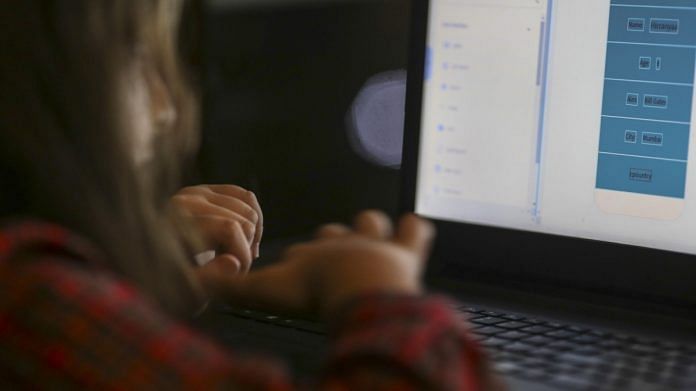New Delhi: More than 2.9 crore children in India do not have access to digital devices, a report by the education ministry has revealed, pointing out the disadvantage these students have had to face for over a year with schools shut due to Covid.
A preliminary version of the report, titled ‘Initiatives by school education sector in 2020-21 for continuing teaching and learning’, had stated that Bihar had the highest tally of students, over 1.4 crore, with no access to digital devices across the country.
As reported by ThePrint earlier, the preliminary version had been submitted to the Parliamentary Standing Committee on Education, Women, Children, Youth and Sports in June. The detailed version of the report was made public Wednesday.
After Bihar, Jharkhand occupied the second position with 32.5 lakh children without digital access. It was followed by Karnataka with 31.3 lakh students who lacked access to these devices.
While data for Uttar Pradesh, Maharashtra, Andaman and Nicobar, Manipur, Goa, Arunachal Pradesh and West Bengal is not available yet, four states and UTs — Delhi, Chandigarh, Chhattisgarh and Madhya Pradesh — gave their data in percentages.
In Madhya Pradesh and Jammu and Kashmir, 70 per cent students did not have access to digital devices while the number was 27.28 per cent in Chandigarh. In Delhi, only 4 per cent children did not have digital access.
The report further noted that most students from the Navodaya Vidyalayas (NVs) and Kendriya Vidyalayas (KVs), which are run by the central government, did not have difficulty accessing digital education.
A little over 7 per cent children from NVs did not have digital devices while the number was less than 2 per cent for students from KVs.
“The pandemic has led to disruption in the formal school education system in the entire country. Approximately 26.45 crores children, 96.87 lakhs teachers and 15.07 lakhs schools are impacted,” notes the report.
It adds that “teaching and learning for children who have no access to digital devices”, is one of the major areas of concern for the government during the pandemic.
“The ‘new normal’ may also have a huge impact on the learning levels for almost all children; learning loss may be a reality for many children,” it further notes.
Also read: Maharashtra schools reopen for physical classes after 18 months, attendance not mandatory
Measures taken by government
According to the education ministry report, states took various measures to reach out to the children who did not have access to digital devices.
Some of the steps included doorstep delivery of textbooks and worksheets, intervention through gram panchayat or community support for access to TV, radio and digital devices.
Some states like Assam and Andhra Pradesh also arranged home visits by teachers while Bihar arranged home visits by volunteers.
The report added that mobile and mohalla classes were also organised in Bihar.
The detrimental impact on children’s learning in the absence of physical classrooms is something that has been established in many earlier reports.
A study conducted by the Azim Premji University earlier this year said that “on average, 92% children lost at least one specific language ability and 82% lost at least one specific mathematical ability from the previous year across junior classes”.
A recent report released by UNICEF, in September, also noted that in India, 80 per cent of the children in the age group of 14-18 years reported lower levels of learning because schools were shut.
Also read: How Kejriwal’s Delhi govt aims to teach students patriotism through ‘Desh Bhakti curriculum’



